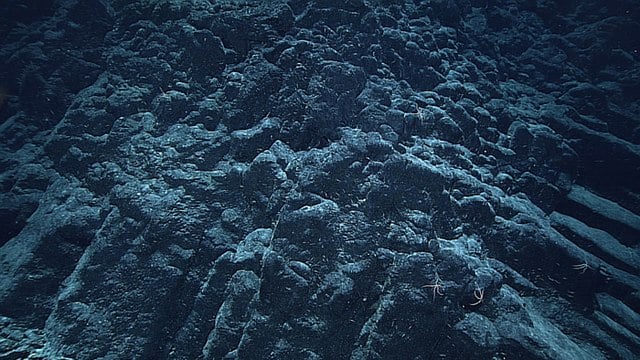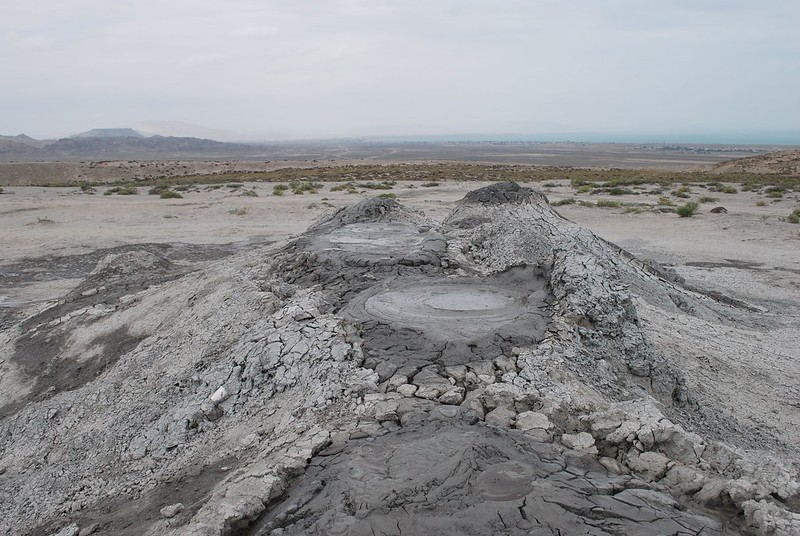
Scientists exploring the Arctic region have made an intriguing discovery: a submerged volcano emitting a combination of mud and methane from within a larger crater. This expansive crater likely originated following a catastrophic event at the conclusion of the previous ice age.
The researchers identified this extraordinary phenomenon approximately 80 miles (130 kilometers) south of Bear Island, also known as Bjørnøya, situated in the Barents Sea. Termed the Borealis Mud Volcano by the expedition team, it represents the second known occurrence of its kind in the waters of Norway.
A professor at The Arctic University of Norway and co-leader of the Advancing Knowledge of Methane in the Arctic (AKMA) expedition, Stefan Buenz, “Exploring the seabed and discovering new methane [seeps] is like finding hidden treasures.”
“Every time we go down to the seabed, we get the feeling that we have just begun to understand the great and incredible diversity of such [seep] systems.”
Dimensions of the newly emerged volcano
The Borealis Mud Volcano has a diameter of approximately 23 feet (7 meters) and stands at a height of about 8 feet (2.5 meters). On May 7th, the scientific team employed a remote-controlled rover to record video footage of this modest-sized mound that continuously expels a fluid with high concentrations of methane.
It is important to note that methane, once it enters the atmosphere, acts as a potent greenhouse gas, contributing to the ongoing issue of climate change. Remarkably, the entire formation lies at a considerable depth of 1,312 feet (400 meters) beneath the surface of the sea.
Analysis indicates that this extraordinary structure most likely emerged from a sudden and substantial eruption of methane that occurred approximately 18,000 years ago, during the final stages of the previous glacial period.
The abundance of marine creatures
During their investigation, the researchers made a fascinating observation: the sides of the giant undersea crater with volcano were bustling with an abundance of marine creatures. These organisms were thriving on carbonate crusts, which are mineral formations created through the consumption of methane by microorganisms.
As a byproduct of this process, bicarbonate is produced. The existence of these carbonate crusts can be traced back thousands of years, as indicated by a study published in the International Journal of Environmental Research and Public Health in 2019.
The researchers documented the presence of various marine life forms, including sea anemones, sponges, corals, starfish, sea spiders, and a diverse range of crustaceans.
Other mud volcanoes
Among the mud volcanoes found in Norwegian waters, the Håkon Mosby volcano is the sole other known example. This particular feature, measuring 0.6 miles wide (1 kilometer), was first discovered at a depth of 4,100 feet (1,250 meters) beneath the surface of the water, situated on the seabed south of Svalbard.

The University of Bergen’s Center for Geobiology has documented this finding, which dates back to 1995. Identifying and mapping underwater mud volcanoes pose significant challenges.
However, researchers estimate that numerous such giant undersea crater volcanoes may exist on the seafloor worldwide, potentially numbering in the hundreds or even thousands. These intriguing geological formations provide a rare opportunity to gain insights into processes occurring deep within the Earth’s crust.
Primarily emitting water, minerals, and fine sediment from these depths, mud volcanoes offer valuable information about past environments and conditions on our planet. Furthermore, they hold the potential to provide valuable insights into systems present on other celestial bodies, presenting opportunities for scientific exploration beyond Earth.
See all the latest news from Greece and the world at Greekreporter.com. Contact our newsroom to report an update or send your story, photos and videos. Follow GR on Google News and subscribe here to our daily email!



